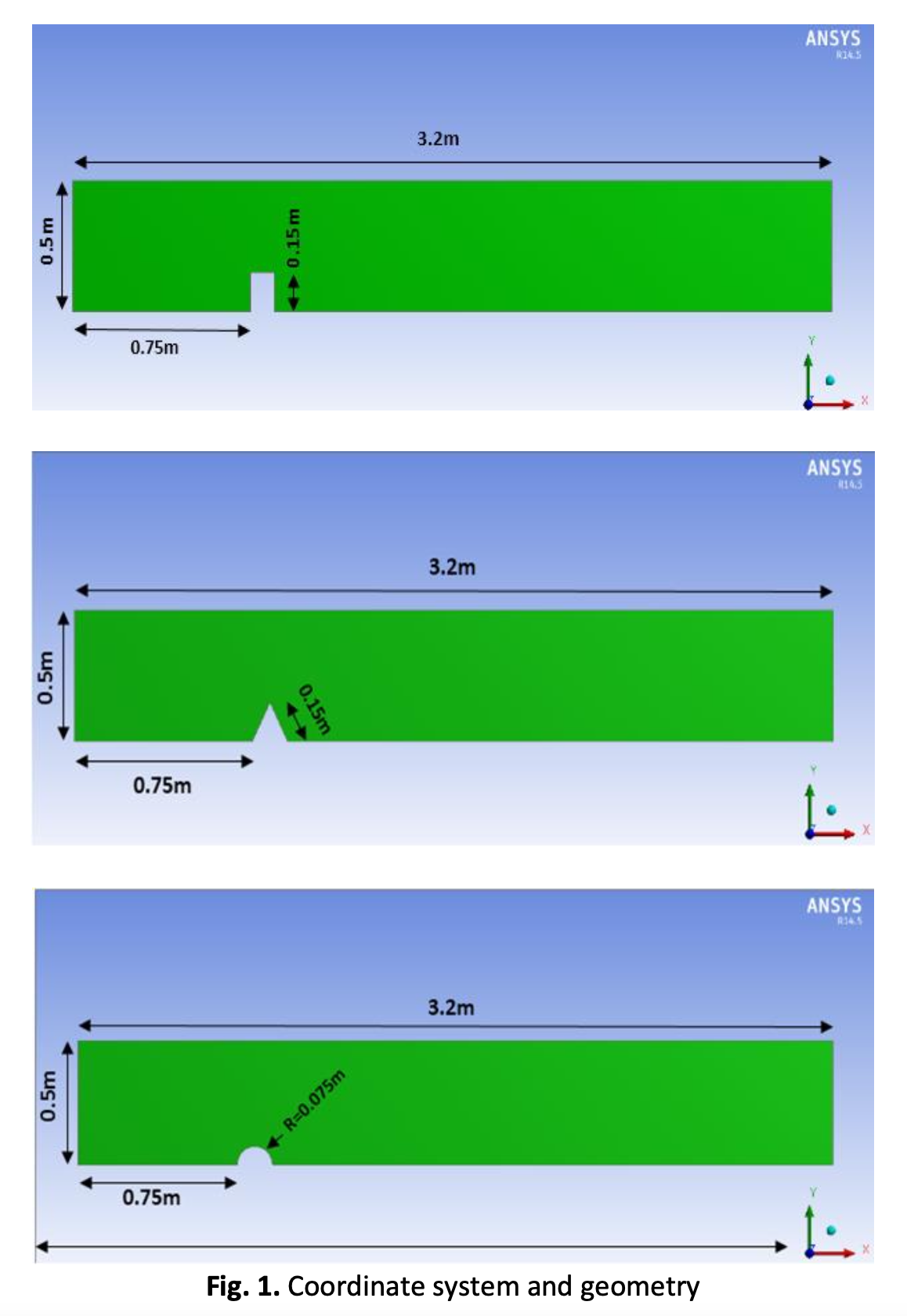Numerical Simulation of Characterization of Hydraulic Jump over an Obstacle in an Open Channel Flow
DOI:
https://doi.org/10.37934/arfmts.106.1.115Keywords:
Open-channel flow, pressure field, VOF, CFD, void fraction, dynamic fieldAbstract
Hydraulic jumps produce so much turbulence that hydraulic energy is effectively converted to heat. The speed, form, and volume of obstructions in an open channel have a considerable impact on the characteristics of a fluid stream. To create a hydraulic leap, a numerical analysis of water flow was done for a two-dimensional open channel over three different forms of obstruction, each with three volumes. Because of the impact of the air, it is possible to think of the emulsion of air and water as a compressible fluid with a vacancy percentage (a second fluid). The volume of fluid model (VOF), linked with the turbulent model, has been used to study each type of obstruction. The second-order upwind technique incorrectly solves the two-dimensional Reynolds-averaged Navier-Stokes equations. The numerical technique is implemented using the straightforward approach that was devised using control volumes. A wide range of Reynolds numbers (Re), corresponding to various flow patterns, were calculated for. The results demonstrate that when the Reynolds number increases, the effect of the gas phases on the liquid phases increases. The boundary layer thickness in the upstream zone from the obstacle decreases with increasing Re, whereas downstream from the obstruction, the height of the recirculation zone rises. Profiles of the empty fraction reveal two zones that are consistent with a diffusion equation. This article observed an inversion of the pressure gradient in the pressure field, which caused the boundary layer to separate; this is known as the "back flow phenomenon." The results of the current work have been verified by comparison with those of related research projects, and the comparison has shown a commendable degree of agreement. Additionally, pressure in various areas of the obstacle and velocity were similar.
Downloads

































